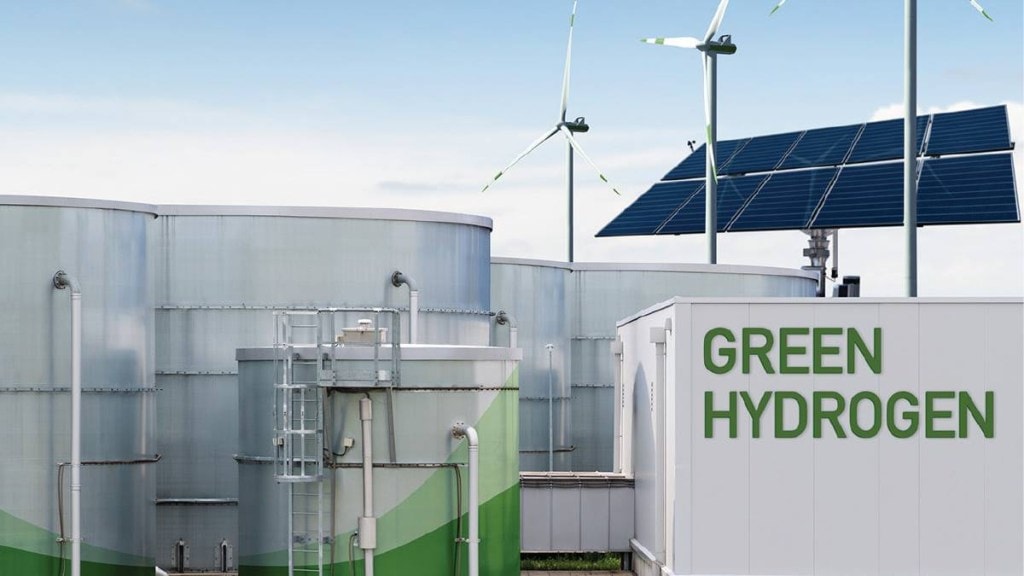By Saurav Kumar and Roopam Dadhich
The global energy landscape is undergoing a transformative shift towards sustainable and economically viable alternatives, with green hydrogen (GH) emerging as a cornerstone. This versatile energy carrier, produced using renewable energy sources, has applications ranging from transport to industrial processes and offers a pathway to decarbonize sectors that are challenging to electrify. Within this broader context, India is positioning itself as a key player in the GH space.
Recently, the Government of India has introduced two pivotal initiatives in this context, the GH Standard and the National GH Mission. The GH Standard a minimum standard for GH as having a well-to-gate emission of not more than 2 kg CO2 equivalent per kg of H2 produced, encompassing water treatment, electrolysis, gas purification, drying, and compression of hydrogen. 1 The National GH Mission, an integral part of India’s GH roadmap, aims to incentivise the commercial production of GH with an aim to make India a global GH hub. The mission seeks to decarbonize sectors where direct electrification is challenging, such as heavy-duty transport and industry. Under the many schemes introduced under the mission, financial incentives are provided for the domestic production of electrolysers and GH.
The economic implications of these initiatives are profound. According to a report, the cost of GH could plummet by 50% by 2030 due to the continuous development of production infrastructure, making it a cost-competitive substitute for natural gas. 3 Additionally, the demand for hydrogen in India could potentially quadruple by the year 2050, accounting for nearly a tenth of worldwide demand.
Considering the long-term feasibility of fulfilling this demand through GH, the aggregate market value for GH in India is estimated to be around $8 billion by the year 2030. 4 India’s abundant renewable resources further position her as a potential significant exporter of GH. The global GH export market is projected to reach $300 billion by 2050, offering India a lucrative export opportunity.
Beyond energy production, GH offers direct benefits in decarbonizing industrial processes. Industrial applications of GH in sectors such as steel, cement, and chemicals could revolutionize production methodologies. For instance, it can serve as a reducing agent in steel production, thereby eliminating the need for carbon-intensive coke. This not only reduces greenhouse gas emissions but also lowers long-term operational costs for industries. Moreover, India’s heavy reliance on oil imports, which currently stands at around 85% of its crude oil needs, may be significantly reduced, thereby enhancing the country’s energy security.
Global initiatives in the GH space offer valuable lessons for India. The United States (US) has introduced tax credits to make GH cheaper, offering up to $3 per kilogram for low-carbon variants. 6 In the European Union (EU), recent changes aim to simplify regulations for production of GH, 7 making it easier for GH projects to get off the ground. Australia has allocated A$2 billion for its Hydrogen Headstart program focusing on research and commercialization and plans to introduce a certification scheme to verify GH production. 8 These moves in the US, EU, and Australia show a unified push to boost the GH sector through financial incentives and regulatory adjustments.
However, challenges remain. The initial capital expenditure for electrolyzers and infrastructure is very high making it a deterrent for a headstart. India could adopt subsidy models similar to those in the US to encourage the adoption of GH technologies. Another challenge is the absence of a robust certification system for GH in India. Drawing from Australia’s certification mechanisms and EU’s simplified regulatory approach, India can instill quality assurance and attract investment. Infrastructure for the storage and transportation of GH is also a concern. Australia’s development of hydrogen hubs, which serve as centralized points for hydrogen production, storage, and distribution, could serve as a model for India.
In conclusion, India’s GH initiatives are not merely environmentally strategic but economically vital. The potential for job creation, energy security, and industrial transformation is immense. While challenges exist, they are surmountable, especially when informed by global best practices. Therefore, GH stands as a pivotal element in India’s future energy landscape and economic growth.
The authors Saurav Kumar (Partner) and Roopam Dadhich (Associate), INDUSLAW.
Disclaimer: Views expressed are personal and do not reflect the official position or policy of Financial Express Online. Reproducing this content without permission is prohibited.

